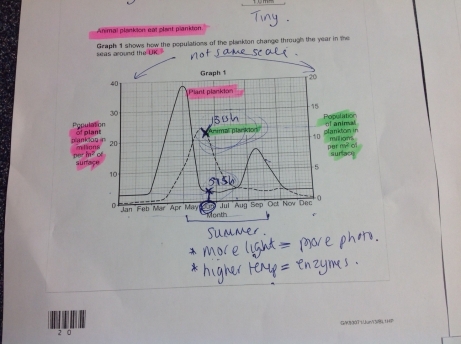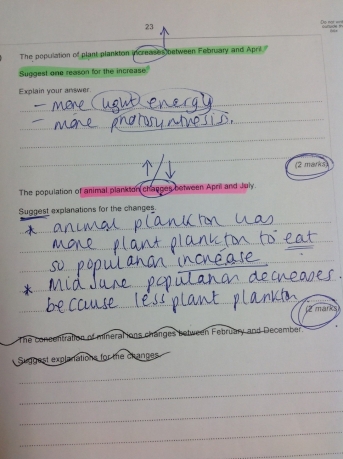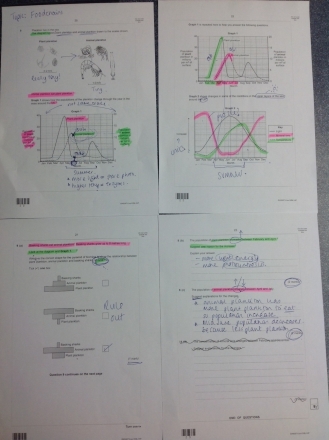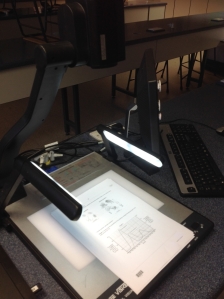I’ve seen the term ‘metacognition’ banded around on Twitter recently and it’s definitely something I want to read up on. I also watched a video on John Tomsett’s blog (@JohnTomsett) of friend and ex-colleague Lisa Kirby teaching a maths class about simultaneous equations. She used a technique I often use which I sort of thought was intuitive but it seems it has a fancy name: metacognition! According to the TEAL website, metacognition can include doing the following:
“Teach learners how to ask questions during reading and model “think-alouds.” Ask learners questions during read-alouds and teach them to monitor their reading by constantly asking themselves if they understand what the text is about. Teach them to take notes or highlight important details, asking themselves, “Why is this a key phrase to highlight?” and “Why am I not highlighting this?””
It’s something I always do with GCSE and A-level questions, especially towards the start of the course, to get students used to how to approach questions. Rather than assume that they have an intrinsic understanding of what to do, I model my own thinking. I’ve made my Year 9s a booklet of past GCSE questions to prepare them for their end of year exam and the first question was horrible! Not in terms of subject knowledge but it’s got pages of graphs and diagrams to work through. The question was Question 9 from the June 2013 BL1HP (AQA) about feeding relationships and pyramids of biomass.
Copy of booklet and mark-scheme:
Practise Qs MARKSCHEME for Summer Exam 2015
Practise Qs for Summer Exam 2015
I gave the booklet out to one of my Y9 classes yesterday and was very quickly met by puzzled faces and lots of questions like “what do I do on this page” (referring to a page with no questions, just graphs and text). Today, I took a different approach with another Y9 class and modeled my thought processes with them. MUCH different results!
I used the Visulaiser to project the image of the question on to the board. I started with the basics – making sure I had a pen and highlighter to hand. I tried to talk aloud every thought process which came into my head which is a little bit weird as lots of things we do without being aware of them (as experienced adults). I read each part of the information carefully, highlighting key words, but more importantly talking about why I thought they were important and what background knowledge I could link to them.

We looked at the graph showing the population of animal and plant plankton over a year. I talked aloud about things I noticed, like the y-axis scales being different on the left and right, and patterns I noticed in the trends. I talked aloud about the summer being warmer with greater light intensity. I modeled reading figures from the graph and why I chose to do a rough reading rather than a precise one.

When I’d verbally analysed the data we moved on to look at the questions. I read the questions aloud and talked about the command terms and bullet pointing and looking at how many marks the question was worth.

To look at this 5 mark question took about 15 minutes. I explained to them that this would happen much more quickly in real life as they’d become faster with practise. I was so impressed with how attentive they were; even the ones who like to race ahead and get on with their work were patient and could see the value in what we were doing. They were really positive when we’d finished the question giving unprompted comments such as:
“I would never have thought to do that”
“I never would have been able to do that”


One thought on “Metacognition & Exam Technique”